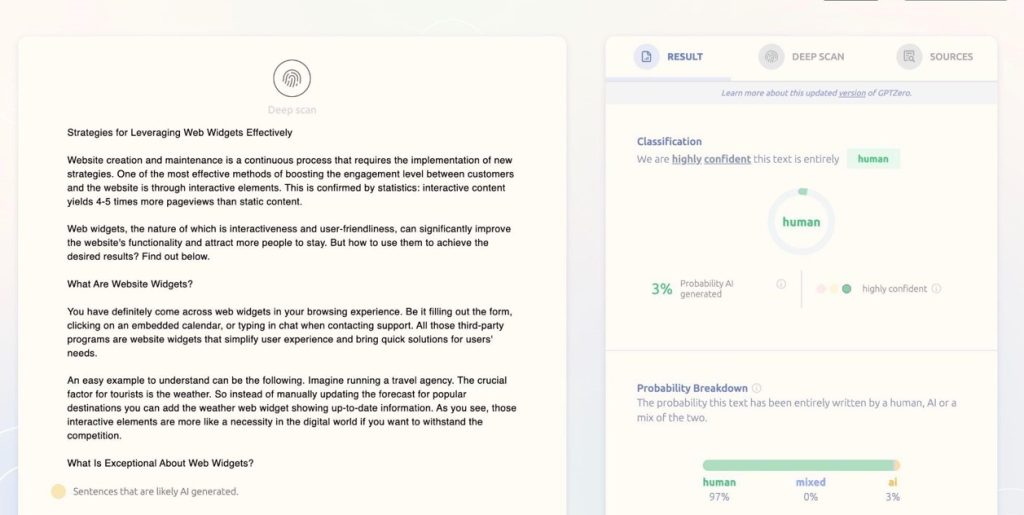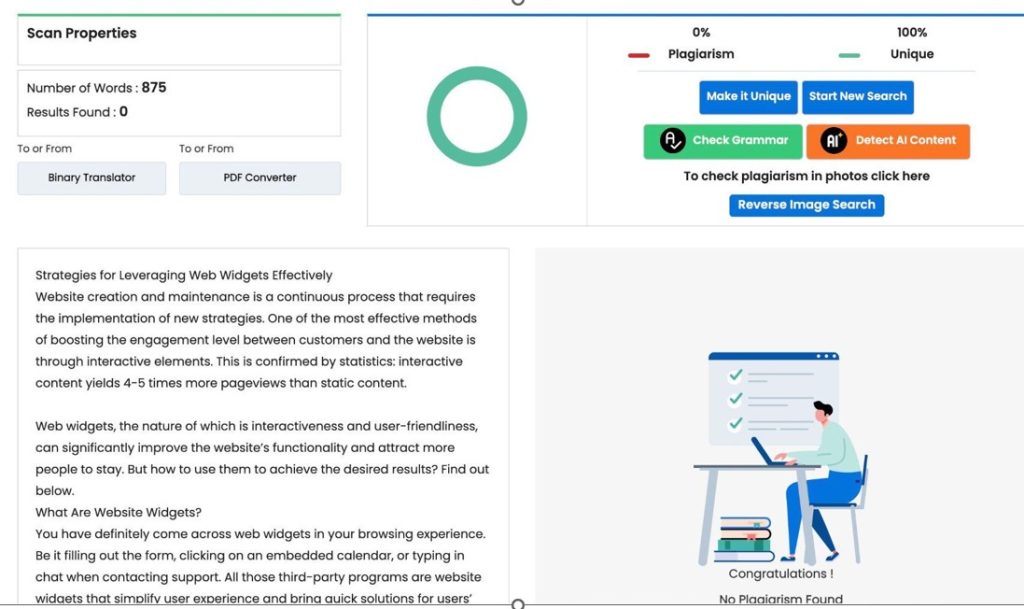Website creation and maintenance is a continuous process that requires implementing new strategies. One of the most effective methods of boosting customer engagement between customers and the website is through interactive elements like web widgets.
This is confirmed by statistics: interactive content yields five times more page views than static content.
Web widgets, which are interactive and user-friendly, can significantly improve a website’s functionality and attract more visitors. But how do you use them to achieve the desired results? Find out below.
Table of Contents
What Is A Widget For Your Website?
You have encountered a web widget in your browsing experience, whether you fill out a form, click on an embedded calendar, or type in chat when contacting support.
All those third-party programs are website widgets that simplify the user experience and provide quick solutions for users’ needs.
An easy example to understand is the following. Imagine running a travel agency. The crucial factor for tourists is the weather.
So, instead of manually updating the forecast for popular destinations, you can add the weather web widget showing up-to-date information.
As you can see, those interactive elements are necessary in the digital world if you want to withstand the competition.

What Is Exceptional About Web Widgets?
These integrated website elements offer numerous advantages for businesses. This is what you can expect from adding web widgets to your website:
- Ease of implementation. Website widgets are integrated by copying a small code into the website code. However, many services offer web widget templates that are customizable and ready to use. So, even if you don’t know coding, you can still work on diversifying your website.
- Increased functionality and interactivity. Web widgets offer additional and exceptional capabilities for websites that enhance their functionality. Such elements as Google Maps, countdown timers, social media widgets, live chatbot, and others improve user experience and help to get everything in one place.
- Improved user participation. When exploring the website, customers don’t usually take long to learn everything by themselves. They need a little guidance. Web widgets can be that magic wand. For instance, an exit intent widget can prompt users to change their minds about the offer before leaving; a social media feed widget can show your presence on other platforms and engage people to check your Instagram page.
- All-in-one-place solutions. Adding web widgets is not only about interactiveness. It is about caring about customers who will not have to search simultaneously for something that can be embedded on the page. And the statistics show that 79% of customers want brands to demonstrate they care about them.
How To Use Web Widgets Effectively
Due to website widgets’ diversity and rich functionality, the main challenge is to embed those third-party programs appropriately.
Here are the steps that can help you simplify this task.
Choose The Relevant Widget
Everything starts with a choice of the needed web widget. Analyze its purpose and value. Doesn’t it have to inform customers about sales? Or include the news feed?
Or just show a countdown timer for a hot offer? As the diversity of web widgets is vast, you can select the most suitable interactive element for your needs.

Find The Appropriate Place For It
Adding web widgets is like an art: if you place them wrongly, they can even do more harm than bring value. Usually, widgets are located on the website’s sidebar, header, or footer, but that depends on the widget type.
For example, elements displaying offers are located in the sidebar or footer so as not to interfere with the user’s journey.
Align Web Widgets With Your Design
Consistency in design is a crucial aspect of building brand recognition. That is why web widgets should seamlessly integrate into the whole design picture.
Follow these rules when implementing website widgets:
- Don’t overwhelm users. More widgets don’t equal better efficiency. Widgets should complement your website that’s why choose only those that will bring you the most value.
- When placing widgets, keep a hierarchy. Some widgets are more important and need to be in a visible place so they can be easily accessed.
- Keep design consistency in mind. A web widget is a part of the website. Thus, it has to be of the same color palette, have the same content in a similar font, and be designed in the same manner as the website.

Consider Mobile Responsiveness
Since widgets are interactive elements, they require thorough preparation before implementation, as users opening the website on desktop and mobile experience different screen sizes and settings.
Your task is to think in advance and make website widgets compatible with most devices.
Add Functional Widgets
There is a group of web widgets whose primary purpose is to increase functionality.
Examples are search widgets, navigation widgets, e-commerce widgets, contact form widgets, and social media widgets.
Choose among those interactive elements to improve the functionality of your platform.
Conclusion: Website Widgets For Enhancing Your Site
Website widgets serve multiple functions. They increase functionality, improve user participation, enhance interactivity, and offer solutions gathered in one place.
These elements can help you stand out from competitors if used appropriately.
So, when considering adding web widgets, the essential aspects to consider are the widget type, proper place, consistency with the design, and mobile responsiveness.
- Best Private Instagram Viewer Apps in 2026 (Tested & Ranked) - December 24, 2025
- 3 Big Reasons The Most Read Blogs Keep Readers Coming Back (In 2026) - December 23, 2025
- Best Proxy Server for YouTube (Top Picks for 2026) - December 22, 2025



